Fresh Garden Produce!
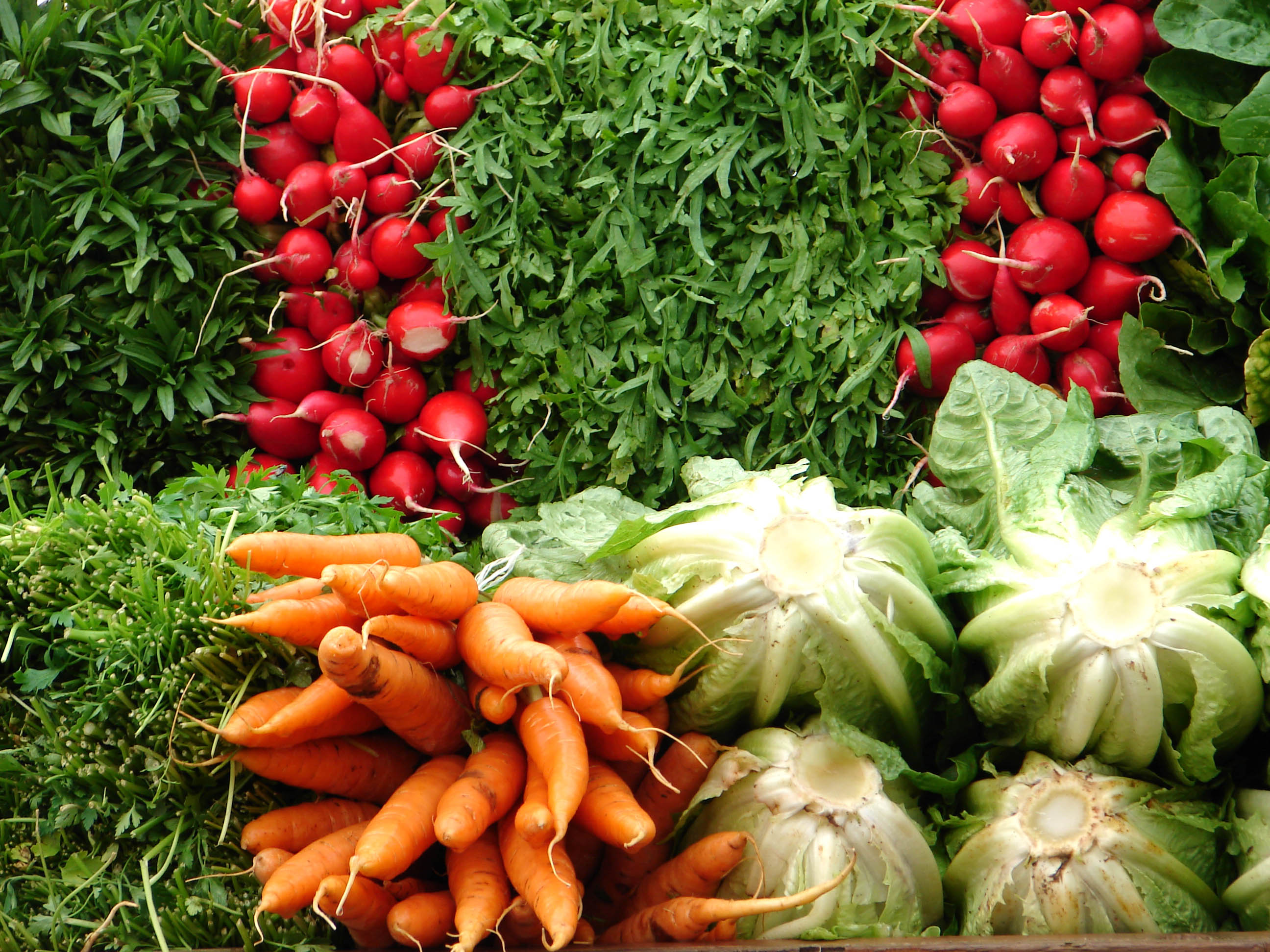
Last week Victoria’s home composting article outlined the success she had while making her aware of the amount of food being wasted.
It’s estimated that 40% of food in the U.S. is never eaten, and each U.S. household wastes at least $1500 in food each year; and it doesn’t count the waste of the resources used to produce that food or get it to your home. Check out this article for a variety of easy steps you can take to save food, money, and resources.
If you have planted a garden, participate in a CSA, or go to a farmers market, you (hopefully) have a lot of produce. If you are like some of us, you end up with a lot of the same kind of vegetable or a lot of vegetables at once; which could be more than you can eat.
Not sure what to do with your extra zucchinis?
Don’t know how to preserve fruits to use later this winter?
What about all those tomatoes?
LiveGreen can help you reduce food waste and save you money!
Visit our Recipe board on Pinterest for lots of new-to-you recipes that include fresh fruits, vegetables, and herbs. There’s also meatless recipes, organic recipes, and light and fresh recipes that are perfect for those hot summer days!
You can also go to our Food board on Pinterest to find numerous resources on how different vegetables and fruits can be preserved for long periods of time including canning and freezing.
Not a good harvest? Our Garden board can help with common ailments or check out the Douglas/Sarpy County Extension; their master gardeners can help with lots of problems and questions, and their website has lots of topics…It’s not too late!
You may also be interested in Edible Omaha, (currently on hiatus) a free publication that highlights clean eating, sustainable food sources and local and organic food. They have a digital version of their publication and numerous recipes posted online.
If you have planted non-hybrid (heirloom) plants you may be interested in seed saving. Saving seeds helps to preserve some of the genetic diversity of plants to increase qualities such as drought-tolerance, heat-and-cold-tolerance, and disease resistance. For information on how to do so, check out this seed saving handbook.
Planted only hybrids this year? Consider checking seeds out from the Benson Library or Seed Savers Exchange next year to start your crop.
Composting for Beginners, Part 3
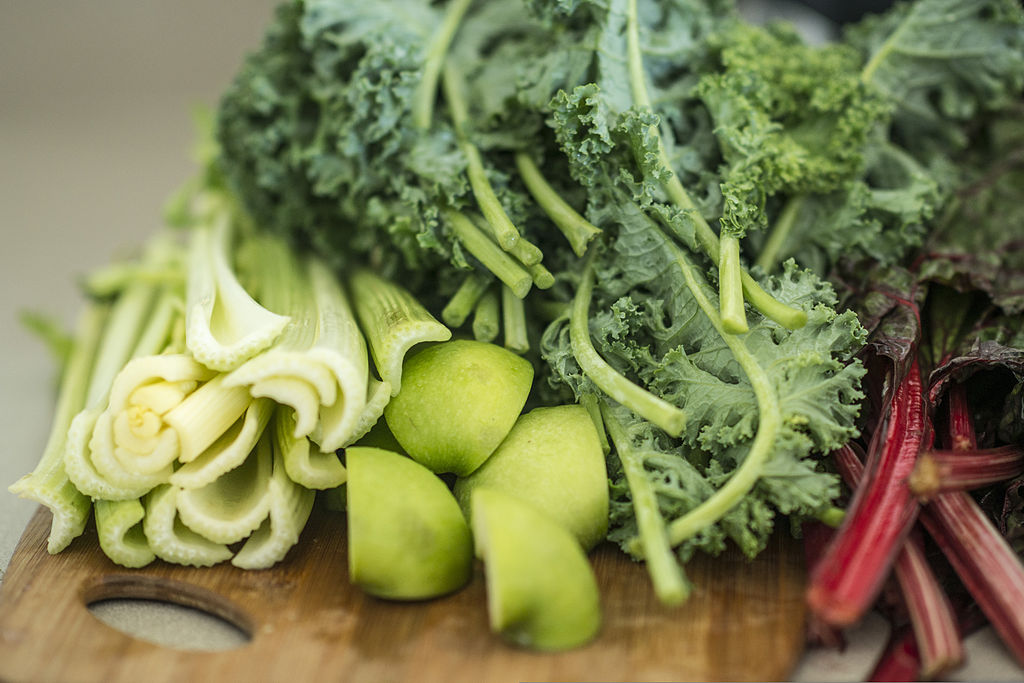
By Victoria Boryca-Smith
This article should probably be called “Things I Learned From Composting”. In part one and part two of this series I told you how I started a compost pile in my backyard, made changes to it, and am reducing my landfill waste while creating a valuable product.
The compost in my backyard is a great, chemical-free, fertilizer that is gentler on plants, stores carbon, and amends the soil. It’s free to do, doesn’t have an odor if done correctly, and saves me money on garbage hauling…and trash bags.
Anyone can compost. Composting can really be done by anyone, even me. I didn’t need to move to a farm to start composting. Suburban living with a backyard may be ideal, just remember no animal products in the compost to avoid critters. Even if you live in a city apartment, or don’t have a yard, you can compost. Use an enclosed bin that spins, or you can vermicompost inside. If you don’t want to compost, that is fine! There are services that will pick up your food waste and compost it for you and Omaha is about ready to start a drop-off service.
Composting opened my eyes to the food that was wasted in our house. It made me pay attention to how much food we threw away. I started to make sure I only bought what I needed, I froze what I couldn’t use, and planned more meals around leftovers. If you need help planning meals, figuring out how much food to fix for a group, or wonder how to freeze a specific item, check out savethefood.org I also encouraged my family to only take what they wanted on their plates. A small amount first, then come back for seconds if still hungry. This resulted in less food being thrown away and besides, I hate scraping plates.
During food prep, you can use the onion peels, celery ends, and other veggie scraps to make your own vegetable broth; saving resources and money on the grocery bill. What seems like small changes really adds up—the U.S. throws away 40% of edible food and a family of 4 throws away at least $1,500 a year on wasted food.
Even with best efforts, there will still be food scraps that need to be composted…and anyone can compost, even you!
Earth Overshoot Day
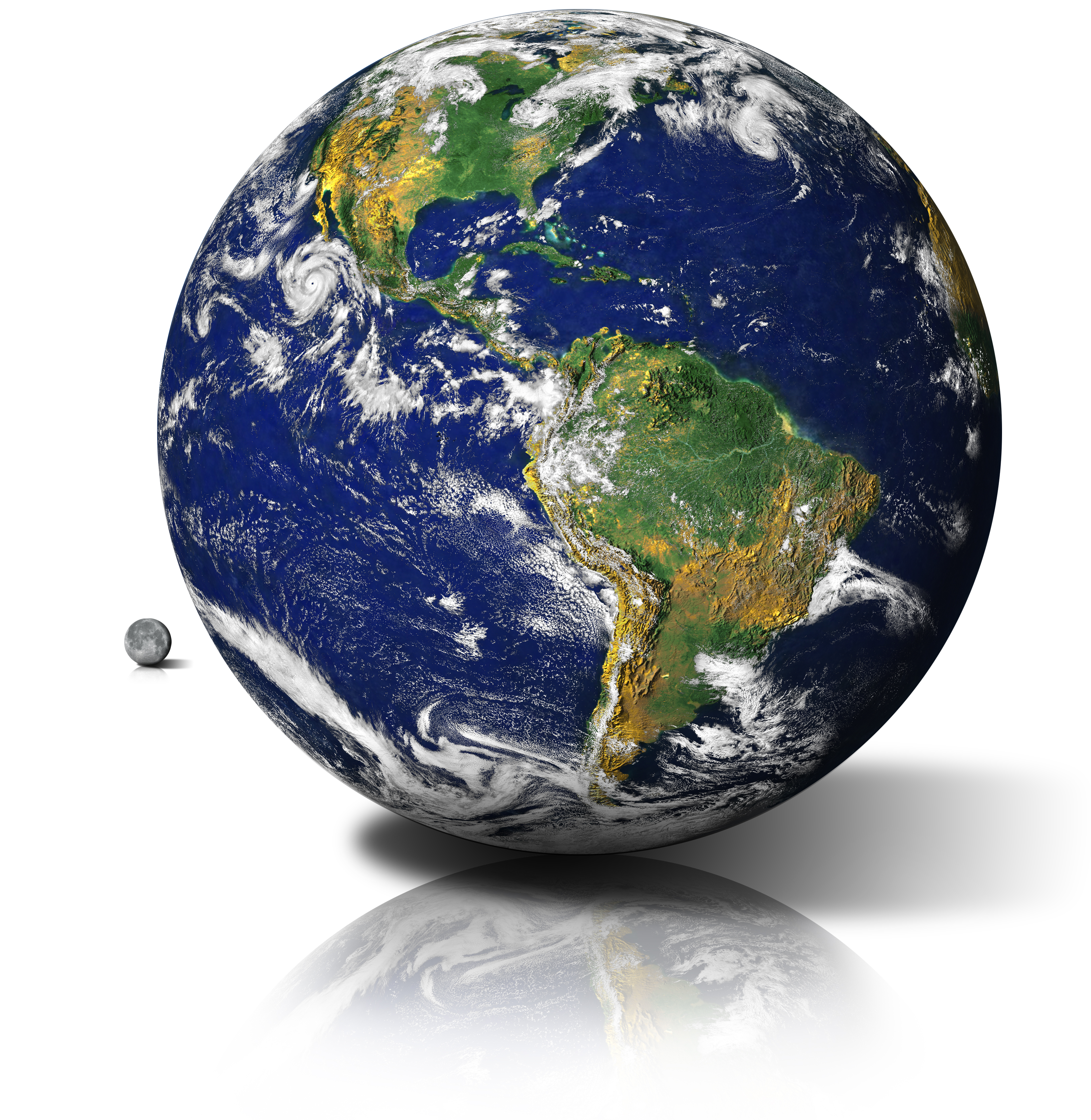
Earth Overshoot Day (EOD) is the day of the year that we have used up the resources the earth is capable of producing in a calendar year. Specifically, “overshoot occurs when a population temporarily exceeds the long term carrying capacity of its environment…the consequence of overshoot is called a collapse, in which there is a die-off and a decline in population density.
As an example, elk eat a specific plant and are healthy. The elk population increases, and they eat more plant; so much that the plant can’t grow fast enough to sustain the elk herd. The elk herd will have die-off because there’s not enough food. If they have eaten the plant to extinction, the elk will become extinct too.
For humans, this applies to all natural resources, everything from trees, to fresh water, to crude oil. The problem here is that the die-off will happen to humans.
EOD is calculated using a wide variety of data from the United Nations. While it has been calculated for several years, the data goes back to 1970, when EOD was December 29th. As we continue to consume resources faster than they can be replaced that date continues to move up; the effect is multiplied. Human population has also gone up, having more than doubled from the 3.7 billion in 1970 to the 7.7 billion humans today—more people means more consumption.
This year EOD was July 29th, which means it would take 1.7 Earths to sustain our current rate of consumption. We don’t have 1.7 Earths so something is going to have to give.
So, how many planets does it take to maintain your lifestyle? Use this free calculator to find out. I’ll tell you upfront that it’s probably going to be higher than you think. The average for a person living in North America is 2.6 Earths, because of the environmental cost of national infrastructure, manufacturing, government, and public services. So if a country has a large footprint, so does everyone in that country.
Just for fun you can modify some of your choices to see what will have an impact. Can you reduce your use? Eat local? Recycle more? Or travel less in a single occupant vehicle? (Pssst! One more reason to register for TravelSmart.) How many earths does it take for your family? Plan to make changes? Please share in the comments below.
Recycling: Last but Not Least
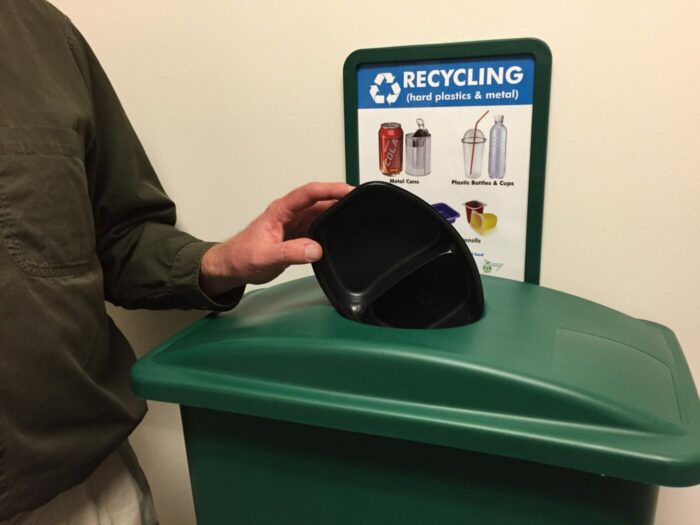
As you may have heard, changes in the global recycling market are impacting recycling in Omaha. This may result in you paying more for recycling, and that creates more questions.
Should you stop recycling? No. Recycling is an important step in recovering resources and should be continued. Nobody was ready for China’s decision, but we will continue to recycle and hopefully find better processes.
Recycling properly ensures those items end up as something else, and not in the landfill. For on campus recycling information please read this and go here. For questions about recycling at home visit Keep Omaha Beautiful’s Omaha Recycles Right, and make sure you don’t “wish-cycle”.
Don’t forget that recycling is the last option. Reduce and Reuse come first, and the order is important.
Reducing use is best for the environment, your pocketbook, and your health. If you don’t need it, don’t buy it. All items have to be dealt with eventually, so less stuff means less waste.
When you do buy, make it reusable. You don’t have to overhaul your life, things like coffee in a mug, taking your own shopping bag, or bringing your lunch in a container with utensils. People often miss the impact because it seems small, but it adds up!
Recycling is the last resort before sending things to the landfill—and a good option, as it uses less new resources (don’t have to mine the aluminum, drill for crude oil) but reusing and reducing are a lot better. Those options may use energy or water, but it pales in comparison to the energy and water used in new manufacturing and transportation.
When making purchasing decisions, try to avoid plastic. Production uses crude oil and other chemicals leading to pollution, which has a negative impact on health including reproductive issues, obesity, cancer, lung diseases and endocrine issues. Research shows long term effects in children when they are exposed to this pollution. These chemicals leach into the liquid and food in the plastic container, especially when heated (everything from your microwavable lunch to the bottled beverage that got hot during shipping). Plastic has its place (nobody is advocating going back to reusable syringes!) but there are lots of other, better options–especially when it comes to personal use.
The World War II adage still applies: Use it up, wear it out, make it do, or do without.
Heat, Humidity Keeps Campus in Energy Curtailment
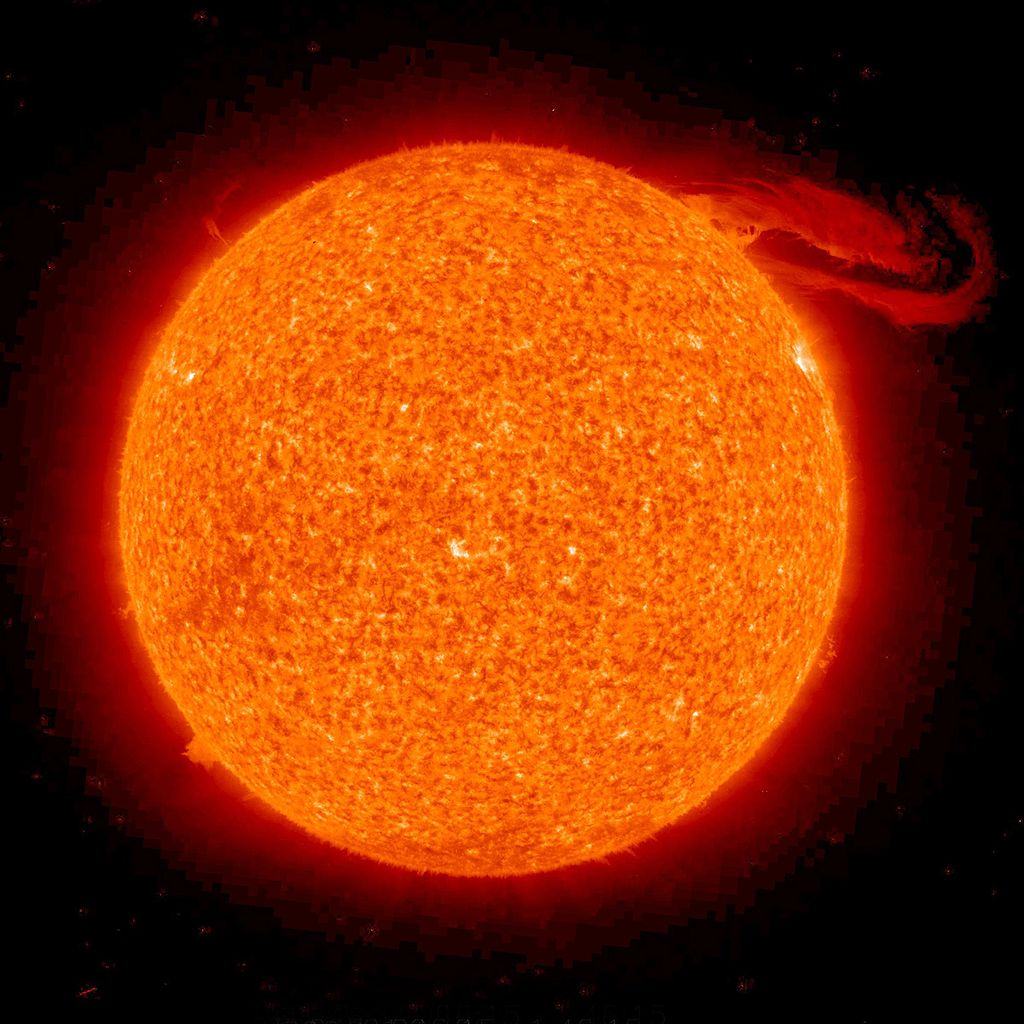
By Melanie Stewart
The heat and humidity has been intense lately. By the end of this week, with the exception of 2 days, we will have been in energy curtailment for a month.
During Energy Curtailment we ask building occupants to perform simple tasks to help ease our energy load:
- close shades/blinds/curtains whenever possible to reduce solar heat gain;
- lower lighting levels where possible, turn off lights in unoccupied areas and when leaving a room;
- turn off and unplug all electrical equipment not in use (computers, coffee makers, printers, chargers, etc.);
- shut fume hood sashes when not in use;
- open doors manually instead of using the ADA buttons;
- take the stairs instead of the elevator; and
- tell others!
The actions, performed across campus, really make a difference—though there’s a lot of skepticism around that.
It’s important to remember that energy curtailment is helping us to keep our ‘peak’ lower. Peak energy use is the maximum amount of energy being used at any given time. While related, this is different than consumption. Consumption is measured over a longer period of time and it’s what shows up on your bill at home—total consumption for the month.
Reducing consumption is important but the focus on energy curtailment days is to keep the peak as low as possible. Not only does this ensure the electricity is available for necessary functions here and at your home, it helps to keep costs low. The peak energy (demand) determines the rate we pay on electricity for the entire next year. It’s a hefty charge that starts immediately and lasts for the next 12 months, and we have better things to spend money on, right?
It may not seem like it, but the simple actions have a huge impact. To see proof, visit medcenterenergy.com to see real time energy information for the entire campus. The picture above is a snapshot showing Sunday’s (blue) and Monday’s (red) use. You will notice Sunday is pretty flat—that’s the amount of energy being used to maintain building temperature and run patient/research equipment under curtailment. We (people) are the difference between the red and blue lines. As we come to work, computers/copiers/coffee makers etc. start running and demand goes up.
We need your help in staying below the flat orange line; and those simple actions, if taken by most people, help us to stay there. Thank you for your continued help.
Recycle Your 3-ring Binders
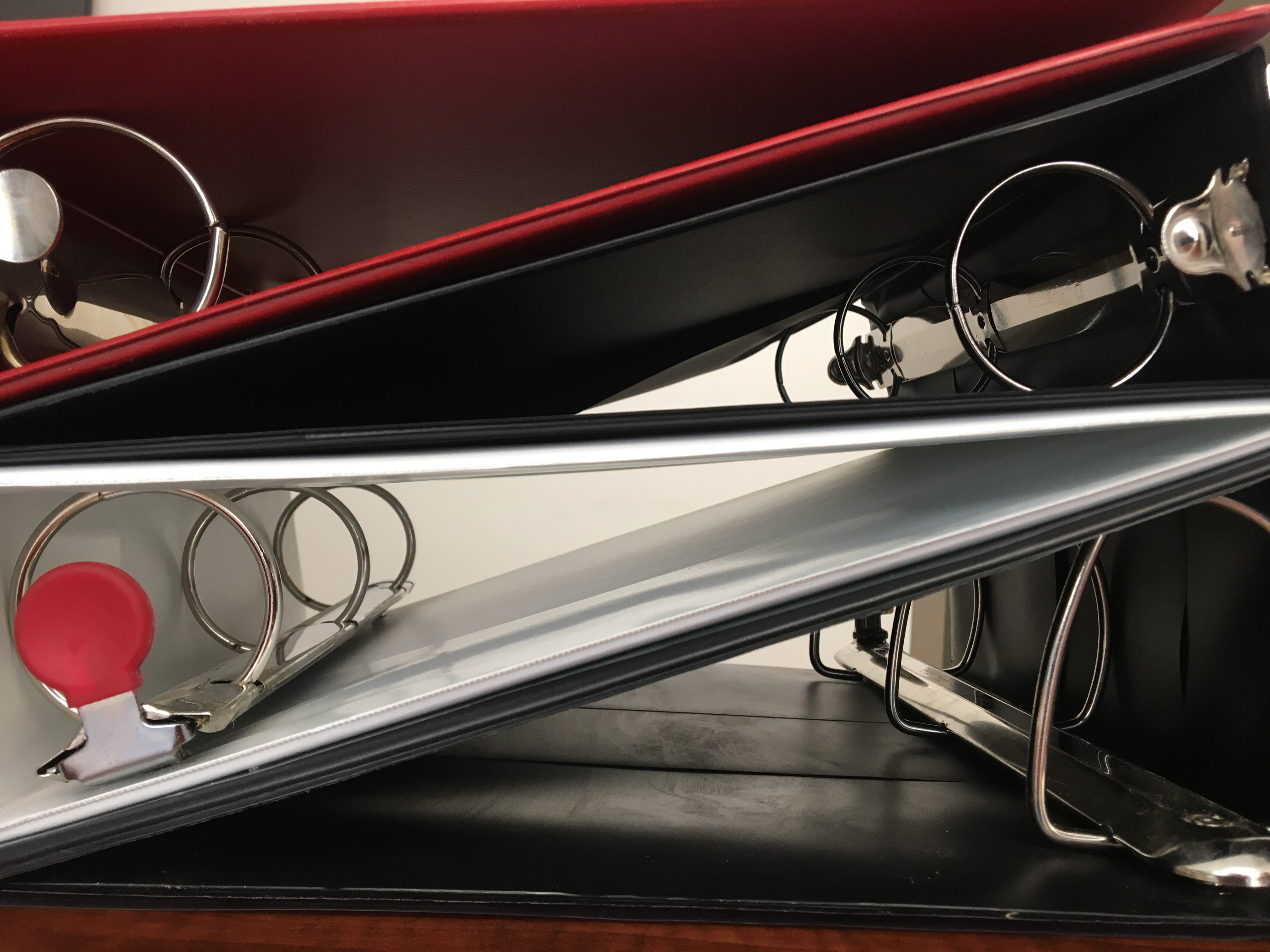
By Melanie Stewart
As systems go paperless and years-old documents are being cleaned out, one of the most common requests LiveGreen receives involves 3 ring binders. Individuals and departments have more than they know what to do with, with no new paper to put in them. This is a good thing as we continue to use less paper and the resources that goes along with printing.
But what to do with those binders?
We weren’t able to recycle them on campus, as they are a cardboard core, covered in soft plastic, with a metal ring system. Omaha’s Materials Recycling Facility, FirstStar Fiber, cannot accept an item made with multiple materials, regardless of what those materials are because there’s no way for them disassemble the item into separate materials to make recycling possible. This meant that if binders couldn’t be reused on campus, or someone wasn’t willing to find a donation location, the binders had to be thrown away.
No more!
If your department has binders that you have no use for, we can now recycle them at no cost to you. A new recycling hauler is willing to remove the metal to recycle it, and hopefully the cardboard (depending on the process/binder). This is currently our best option. If you have binders to recycle, LiveGreen will recycle them. If you have a large quantity, we’d love for you to contact us at LiveGreen@unmc.edu to arrange a time to drop them off at Annex 10. If you have a few, please reuse a supply box in your area and send them via campus mail to zip 7100. If you are not on the 42nd and Dewey campus, this still applies to you, but LiveGreen asks that you consider the resources in shipping them to us vs. recycling a few binders.
Don’t forget: if the binders are still in good shape and able to be reused, we still recommend checking to see if others can use them. They can be used to organize other small items kept in sheet protectors, or other documents, both at work and at home. List them (or anything else in good shape that you don’t need) on LiveGreen’s Supply Exchange—reducing waste and saving money. Don’t forget, if you are looking for items (that you think others on campus may have), you can list the needed items on the site as well.
Composting for Beginners, Part 2
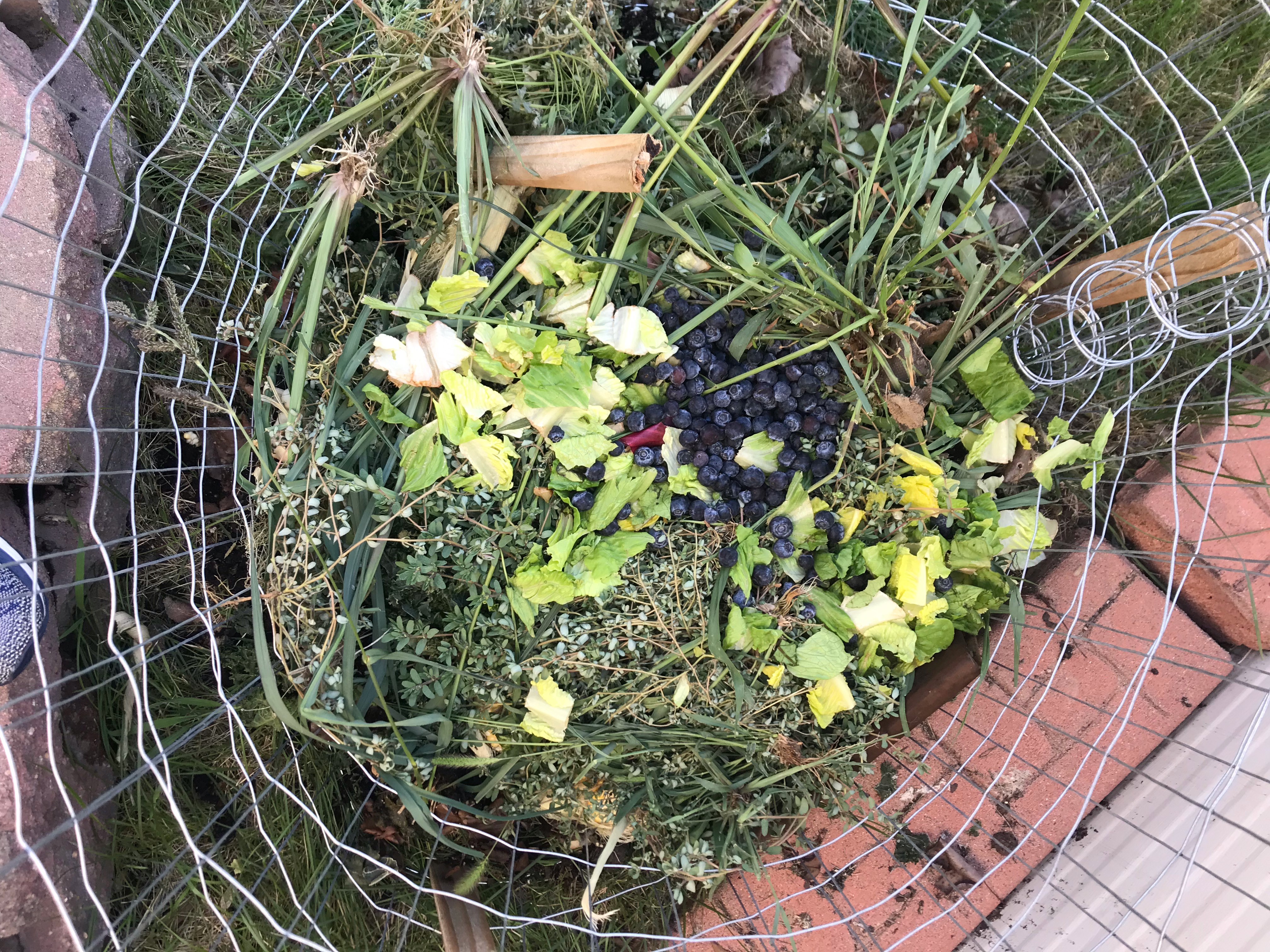
By Victoria Boryca-Smith
Last month I told you about my effort to start composting in my backyard. After starting in a cardboard box, which then started composting, we moved to milk-crates. They were small, had ventilation, and could be moved if necessary. As is often true, the easiest way is often the best way. After trying a few ideas, we settled on a fenced pile in the backyard. It was easy, simple, and free.
Composting is like having a very quiet pet. I needed to water, feed, and turn the compost. This can even be taken literally if you are vermicomposting. I am going to admit that I did not take care of the compost properly in the beginning and there was some smell. Most sources recommend having twice as much “brown” material as you have “green” material. This makes for good compost, but green is easier to come by, brown tends to be seasonal. My pile had too much green and was kind of like a pile of rotting trash. Don’t ignore your compost! This was remedied by adding more browns, and turning the compost regularly.
Every few days, I took out my kitchen waste to the compost pile. If it seemed very dry, I would add a bit of water then. Not much need of that this spring. With the wet weather, turning more frequently is helpful. I usually turn the compost with a shovel about once a week. I have not had any problems with pests, so far. Adding the right amount of brown material helps with that too, though I did struggle with that. We don’t have any trees in the backyard, and we don’t rake. My husband usually just crushes them up with the lawn mower and lets them stay in the yard. So I did have to make a special effort to grab leaves to throw in. With better caretaking, there was no noticeable smell. Shredded newspaper, brown paper in delivery boxes, sticks, and lawn clippings that have turned brown can also be used.
Composting takes patience. Depending on the type of composting you are doing it may take several months or more for your finished product. The temperature, season, and how well you treat your compost pile will determine how long it may take. Having more than one compost pile may be ideal, so the first can finish while you continue to add to the second.
Styrofoam Free Food Service
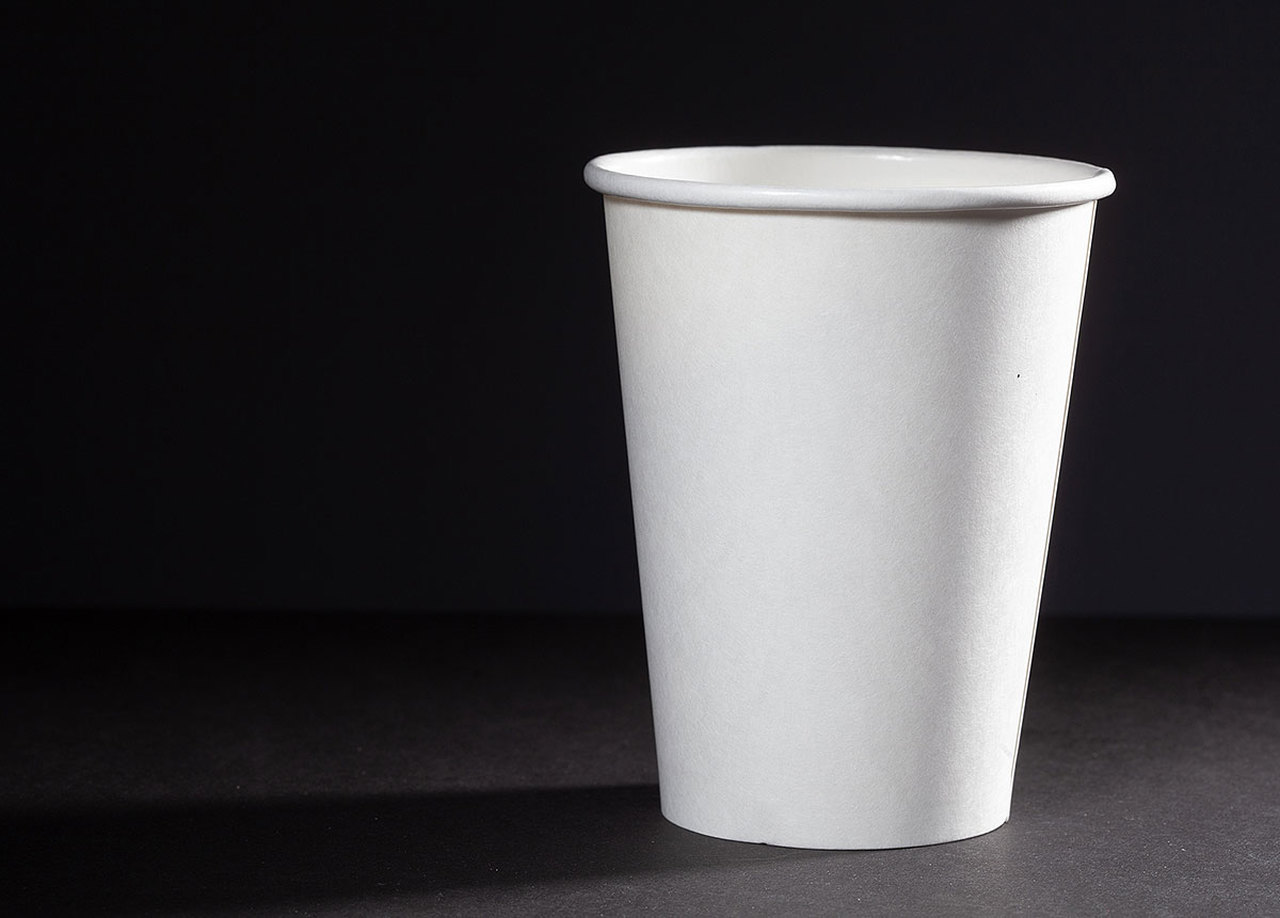
By Melanie Stewart
A few years ago, UNMC/Nebraska Medicine followed UNL’s resolution to become Styrofoam/polystyrene free in food service. Foam is cheap to produce/purchase and an effective insulator, which is why it gets used frequently. However, it contains hazardous chemicals that can cause cancer and other maladies to the end user, as well those individuals involved in production. These chemicals are also exhausted into the atmosphere and make foam difficult to break down in a natural environment, leading to more litter and contamination.
I’m sure you’re aware that Sodexo stopped using foam clamshells some time ago and phased out foam plates as well. After input from you a second, compostable clamshell is now being used in 42nd/Dewey food service locations.
After those changes were made, the most frequently requested change was the removal of foam cups from floor stock. Department budgets are set for the fiscal year so we waited at Nebraska Medicine, but that time is now and floor stock will be foam free (please be patient, the vendor needs time to scale up to our volume)!
To further reduce waste, reusable plates are being offered in the Nebraska Café for dine-in customers, and they are washed in the new, water-efficient dishwasher that was installed a little over a year ago.
Sodexo has been a great partner as we strive to meet our waste goals and have made changes that you may not have noticed. Did you know they:
- Have bio-plastic cups that are compostable?
- Cater food in recycled content boxes that are still recyclable?
- Cater and provide “grab and go” food items in recyclable (plastic) packaging?
- Provide vegetarian/vegan options at every meal.
- Have recycling bins at all locations, and recycle items on the tray return in Nebraska Café?
- Monitor sales which keep the items you want to use in stock, but also eliminates items you don’t want, which reduces waste, and in our case many glass bottles, as well.
All of these changes are helping us to meet our waste goal, but we still need your help. Please:
- Dump unconsumed food/liquid out of your container, recycle everything possible.
- Use plates when dining in.
- “Sort to save” when in Nebraska Café, don’t combine your waste before placing it on the tray return.
- Consume what you buy, take leftovers home.
- Choose fountain drinks over bottles when buying beverages.
Next up: composting both food prep and post-consumer food waste, and exploring reusable to-go clamshells.
Forest Bathing
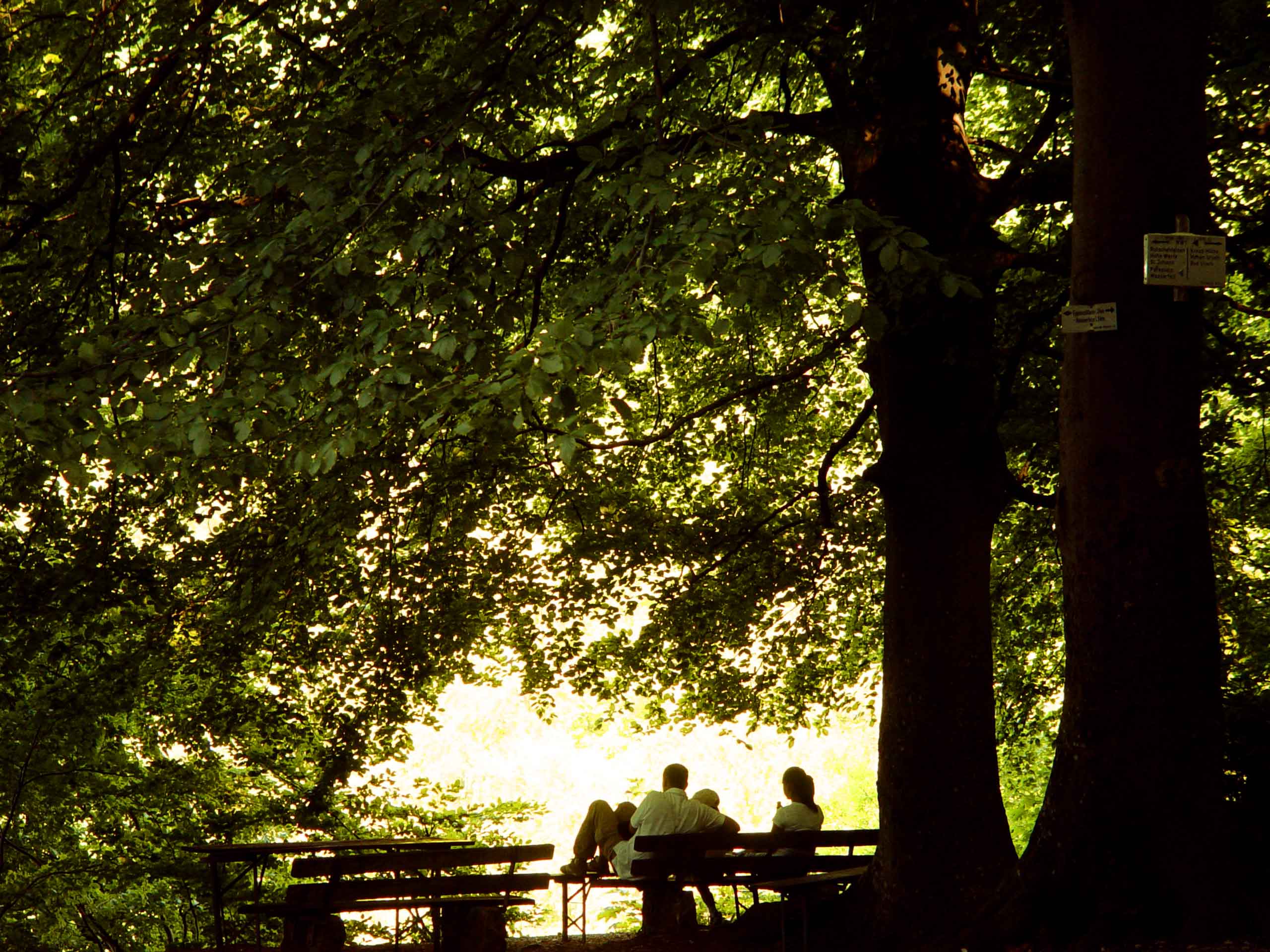
By Tina Spencer
Forest bathing? If you’re like many, the visual picture that came to mind after reading the title included a person (hippie) standing naked and happily showering in a lush forest. Although forest bathing can be likened to cleaning one’s body, it is actually a research-based framework for supporting healing and wellness through immersion in forests and other natural environments, according to the Association of Nature & Forest Therapy Guides & Programs.
As we continue our efforts to be good Sustainability stewards, we explore yet another connection between healthcare and sustainability. Forest bathing began in Japan and translates to Shinrin-Yoku which means “taking in the forest atmosphere”. It provides relaxation from our often chaotic and sometimes too busy lives in a way that can be achieved pleasantly and much cheaper than some medications or other activities prescribed.
Forest bathing has many health benefits. The science proven benefits of forest bathing include decreased risk of heart attack, more energy and better sleep, decreased inflammation, protection against obesity and diabetes, mood-boosting effects, and experiencing a deeper/clearer intuition with an overall increase in one’s sense of happiness.
Forest bathing isn’t an exercise or burning calories. Instead, forest bathing should be a calming experience, without any hurriedness. It should be slow and focused on completely experiencing the quiet noise of nature. It can be as simple as a slow walk in a natural area like one of our local forests or one can take part in a dedicated forest therapy experience. Such programs are coordinated by certified guides and taught by the Association of Nature and Forest Therapy Guides and Programs.
To forest bathe simply, find a park trail or forest and while sitting still or walking slowly, try to be present and focused only on the moment. Leave thoughts of deadlines, errands, work, school, and other busy-ness of life behind. Once present and focused, thoughts can be given to the sights and sounds of nature. Pay attention to the snapping of twigs, the rustling of leaves or animals moving about, and the different shades of green around. All five senses can experience the surroundings in the forest, but be mindful when touching or tasting anything.
Looking for a way to reach a place of greater calm and wellness? Try losing yourself in the beauty of the outdoors and experience the healing power of trees and all that nature has to offer.
2018 Sustainability Report
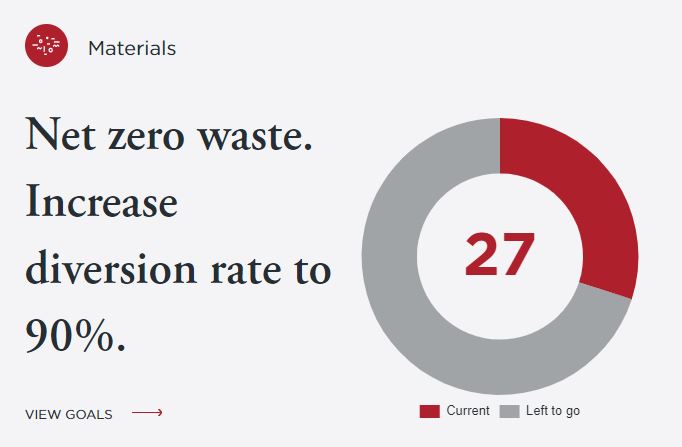
Update shows 2018 successes, upcoming projects, and a new, interactive dashboard
By Melanie Stewart
When we updated our Sustainability Master Plan goals to be more ambitious and have an (earlier) 2030 deadline, we made a commitment to providing consistent, transparent data.
In the past we’ve had a ‘widget’ on our webpage, which allowed you to click on a topic, see the original goal, and the progress towards the goal in graph form. It also listed a few, key ways to reach the goals that were listed in the Sustainability Master Plan. Those strategies were not necessarily what had been working on, but were important to note.
We provided regular articles, like the one you are reading now, as well as a status report in 2015. It was good, but we thought we could do better.
I’m happy to share with you our brand new dashboard, with the annual report. This page is the (calendar year) 2018 annual report with a brief intro at the top and then the dashboard. The dashboard is in an easy to read format, with the goal distinctly visible, and the progress shown in red on the circle with numerical value in the middle. Once the circle is closed, we will have met our goal. The dashboard will be updated on the main page each quarter.
You can click on any goal area to get more information—the actions taken in 2018 to move forward on our goals, explanations of numbers, more detailed data, and upcoming initiatives for 2019. The main page will tell you what percentage of material we recycle/divert from the landfill, but the additional information can tell you exactly what is being recycled.
The report/dashboard can be viewed by clicking here.
I hope you will take a look. Everyone’s actions on campus help us to achieve our goals and knowing where we stand is an important piece.
Ever wondered why sustainability is important to the Med Center, or if it’s tied to our mission? It is directly tied to our mission of “creating a healthy future for all”. For an explanation, read this or this.
